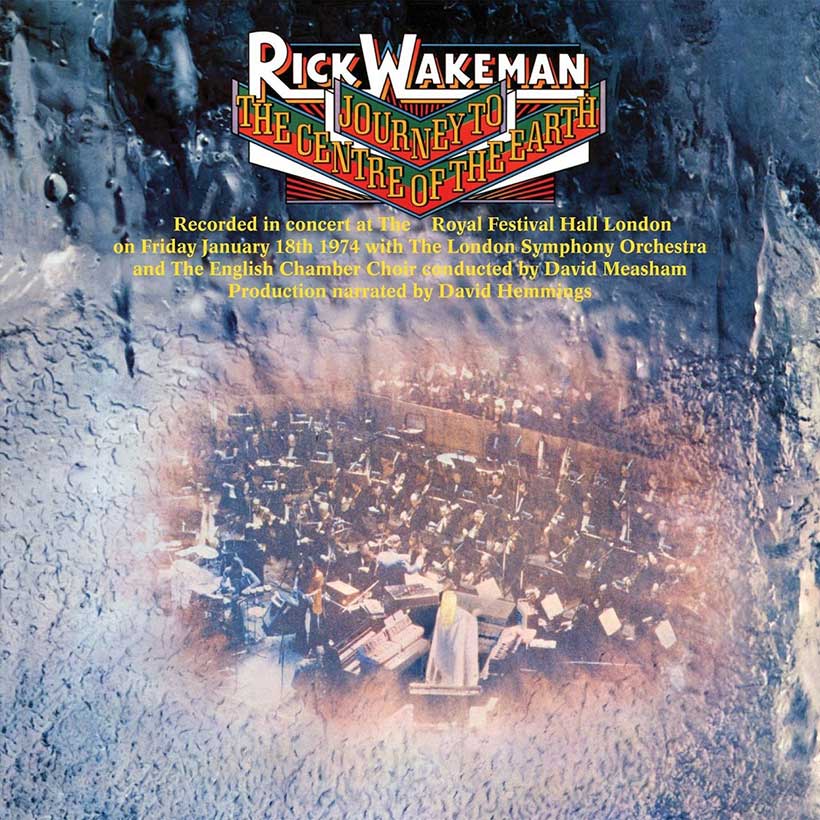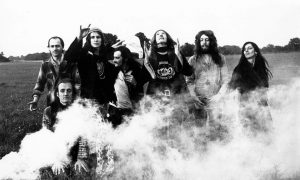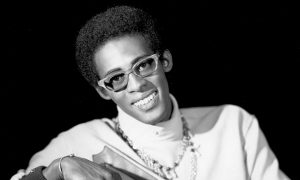Ever since punk broke, Rick Wakeman’s detractors have jeered at what they perceive to be his excessive virtuosity, yet it’s undeniable that the keyboard maestro has played a vital role in fashioning a swathe of prog rock’s most venerable releases. First coming to prominence after playing the Mellotron part on David Bowie’s breakthrough 1969 hit “Space Oddity,” Wakeman then spent two years with respected English folk-rockers Strawbs before replacing Tony Kaye in nascent prog superstars Yes, prior to the recording of their multi-platinum-selling 1971 LP, Fragile. All this laid the groundwork for arguably his most ambitious work, the solo album Journey To The Centre Of The Earth.
Listen to Journey To The Centre Of The Earth right now.
The ceaselessly creative Rick Wakeman had embarked on a solo career in 1973 with The Six Wives Of Henry VIII, eventually selling 15 million copies worldwide. Even before that was released, however, he’d started work on a musical re-enactment of Jules Verne’s science fiction novel Journey To The Centre Of The Earth, yet regardless of The Six Wives’ success and Yes’ massive-selling double-set Tales From Topographic Oceans, Wakeman’s record company, A&M, balked at bankrolling studio sessions involving a choir and a full orchestra as well as a rock band.
Eventually, a compromise was struck. With Rick Wakeman himself reputedly partially funding the project himself, A&M agreed to record his epic project live at London’s Royal Festival Hall, on the night of January 18, 1974. For this much-anticipated sold-out event, Wakeman was joined by the English Chamber Choir, the London Symphony Orchestra, a rock ensemble (mostly hand-picked from pub musicians who frequented his local in rural Buckinghamshire), and Blow-Up star David Hemmings: the latter recruited to narrate Verne’s story, which centered around the fictitious trio of Professor Lidenbrok, his nephew Axel, and their guide Hans, who – with dramatic consequences – follow a passage to the Earth’s core.
A&M invested in recording just the one night’s performance but, with the pressure on, Wakeman and his assembled cast duly rose to the occasion. Though their hour-long show was edited down to 40 minutes for vinyl-cutting purposes, the LP’s two, ever-morphing 20-minute movements (“The Journey”/“The Recollection” and “The Battle”/“The Forest”) are nonetheless captivating, with Hemmings’ commanding oration offset by ghostly contributions from the chamber choir, and the LSO’s occasional Wagnerian overload tempered by funk-flavored rock passages, with Wakeman’s Minimoog and/or clavinet mostly leading from the front.
Journey To The Centre Of The Earth was rapturously received on the night, but its long-term commercial success was by no means a given. A&M dithered until co-founder Jerry Moss personally agreed to its release, but Wakeman’s self-belief was vindicated when the LP finally hit the racks. Following its release, on May 3, 1974, the album entered the UK Top 40, topping the chart on May 25, while peaking at No.3 on the US Billboard 200. Long after yielding an Ivor Novello Award and over 14 million sales for its creator, it continues to beguile new generations of fans.




